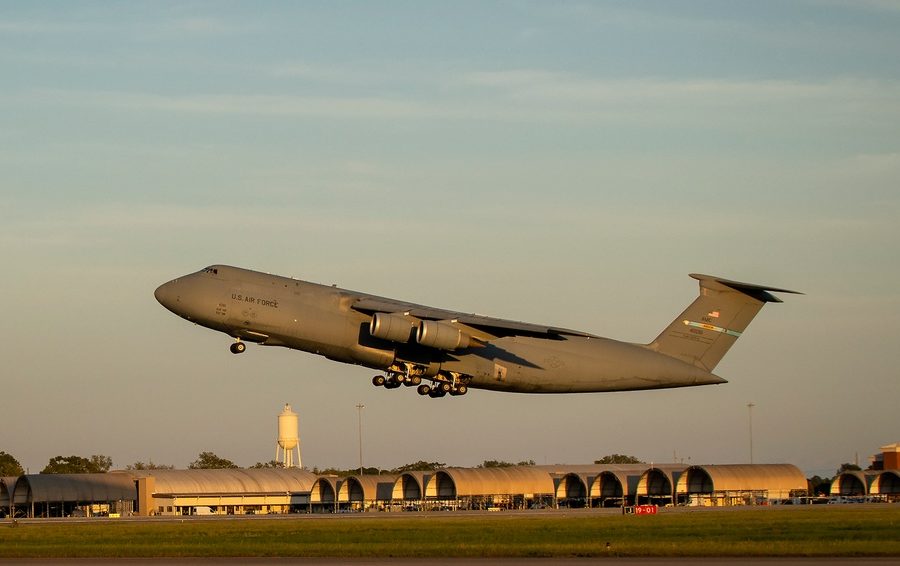The C-5 is USAF’s largest airlifter and one of the world’s largest aircraft, capable of carrying unusually large/heavy cargo over intercontinental ranges. It can also take off and land in relatively short distances and taxi on substandard surfaces if required.
The Galaxy’s front and rear cargo doors permit simultaneous drive-through loading/unloading. The aircraft’s unique upper deck is split between the flight deck with galley and crew rest area forward of the wing and a troop compartment seating 75 passengers and a second galley/lavatory aft of the wing.

The C-5A first flew on June 30, 1968, and a total of 81 were delivered between 1969 and 1973 reaching IOC in September 1970. C-5As underwent major wing modifications to extend their service lives and all but one (converted to C-5M) are now retired. The C-5B first flew in 1985 and was delivered between 1986 and 1989. C-5Bs incorporated all C-5A improvements including strengthened wings, uprated turbofans, color weather radar, triple INS, and defensive systems (on some aircraft). Two C-5As were modified for outsize space cargo and redelivered as C-5Cs in 1989 and 1990. The combined Avionics Modernization Program (AMP)—completed in 2011—and Reliability Enhancement and Re-engining Program (RERP), resulted in the C-5M Super Galaxy.
Upgraded aircraft incorporate new engines with 20 percent increase in thrust, as well as avionics, structural, and reliability fixes. A total of 49 B models, two C models, and the single C-5A were converted.
Major modifications include CNS/ATM upgrades, new mission computers and off-the-shelf color weather radar which are planned for fleetwide completion in FY25. Additional ongoing efforts include a lavatory redesign to address corrosion slated for completion in FY27 and select external skin replacements to increase structural life launching in FY25. Development includes flight deck display replacement as well as studies to replace legacy SATCOMS with modern Mobile User Objective System (MUOS). AFMC is working to improve the C-5 fleet’s mission capable rate, which dipped below 46 percent, by reengaging with industry suppliers.
C-5 Galaxy Technical Data
Contractor: Lockheed Martin; Collins Aerospace and Honeywell (CNS/ ATM, weather radar/mission computer).
First Flight: June 6, 2006 (C-5M).
Delivered: Feb. 9, 2009-Aug. 2, 2018 (C-5M).
IOC: Feb. 21, 2014 (C-5M).
Production: 131 (52 converted to C-5M).
Inventory: 50 (C-5M); two (C-5M-SCM).
Operator: AMC, AFRC
Aircraft Location: Dover AFB, Del.; JBSA-Lackland, Texas; Travis AFB, Calif.; Westover ARB, Mass.
Active Variants: •C-5M. Super Galaxy converted from C-5A/B, incorporating AMP and RERP. •C-5M-SCM. Super Galaxy converted from C-5C to carry large NASA/ space cargo.
Dimensions: Span 222.8 ft, length 247.8 ft, height 65.1 ft.
Weight: Max T-O 840,000 lb.
Power Plant: Four GE Aviation F138-GE-100 (CF6-80C2) turbofans, each 50,580 lb thrust.
Performance: Speed 518 mph, range 5,524 miles with 120,000 lb of cargo.
Ceiling: 45,000 ft.
Accommodation : Two pilots, two flight engineers, three loadmasters. Load: 81 troops and 36 standard pallets, max 285,000 lb; incl seven MRAP vehicles, six AH-64 Apache helicopters, four M2 Bradley fighting vehicles, or two M1 Abrams main battle tanks.


